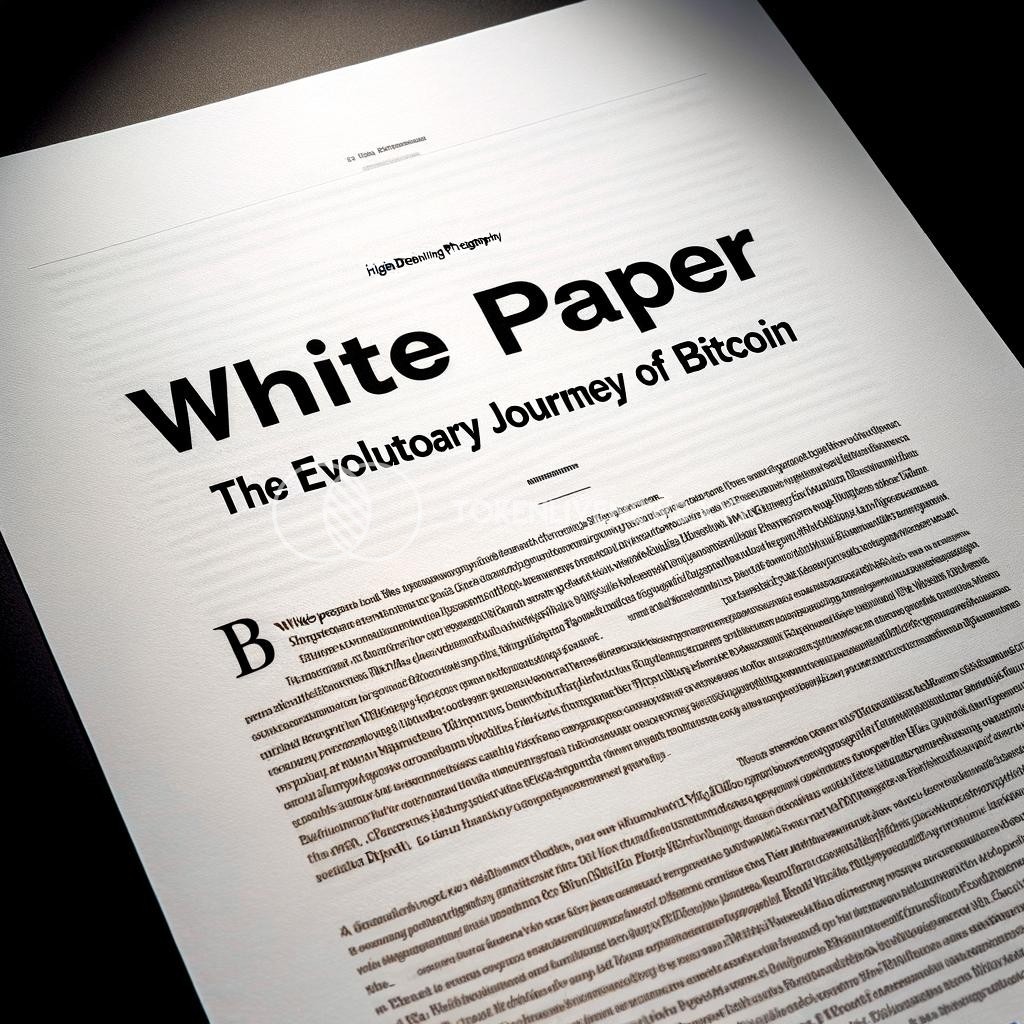White Paper to Mainstream: The Evolutionary Journey of Bitcoin
Introduction
Bitcoin, the world’s first decentralized digital currency, is built on the principles of transparency, independence, and security. Born out of the 2008 financial crisis, Bitcoin started as a mere white paper written by an anonymous person or group named Satoshi Nakamoto. However, over the years, this groundbreaking idea has evolved into a revolutionary force that is breaking barriers and making its way into the mainstream financial landscape. This article explores the key milestones that depict the evolutionary journey of Bitcoin from its white paper to its growing impact on the global economy.
The Birth of Bitcoin: The White Paper
In October 2008, the world witnessed the release of the Bitcoin white paper, titled “Bitcoin: A Peer-to-Peer Electronic Cash System.” This white paper provided a comprehensive description of the underlying technology and conceptual framework supporting Bitcoin. Satoshi Nakamoto proposed a decentralized system, ensuring that no central authority controls or manipulates the currency. This concept sparked a wave of enthusiasm among tech enthusiasts and visionary individuals who saw the potential of a digital currency free from traditional financial intermediaries.
Genesis Block: The First Steps
On January 3, 2009, the Bitcoin network officially launched with the creation of its genesis block. Satoshi Nakamoto mined the first-ever bitcoins, and this milestone laid the foundation for the development and adoption of the cryptocurrency. The early adopters of Bitcoins were mainly technology enthusiasts and individuals experimenting with this novel concept.
Bitcoin’s Infancy: Pioneering Adoptions
During the early years, Bitcoin faced skepticism and skepticism, seen as a niche technology. However, certain key events marked the gradual acceptance and adoption of this digital currency. In May 2010, the first real-world transaction occurred when Laszlo Hanyecz famously bought two pizzas for 10,000 bitcoins. This event became an iconic symbol of Bitcoin’s potential as a medium of exchange. Other companies and organizations started accepting bitcoins as a form of payment, helping Bitcoin gain momentum.
Mt. Gox: A Turning Point
In 2010, Mt. Gox, a Japan-based exchange, emerged as the dominant platform for Bitcoin trading. Despite its eventual downfall, Mt. Gox played a crucial role in boosting Bitcoin’s early popularity. It allowed individuals to buy and sell bitcoins with traditional currencies, making the cryptocurrency more accessible to the masses. The rise and fall of Mt. Gox also highlighted the need for improved security measures within the cryptocurrency ecosystem.
Mainstream Adoption: Bitcoin Goes Global
The year 2013 proved to be a milestone for Bitcoin’s mainstream recognition. Major organizations such as WordPress, Overstock.com, and Expedia started accepting Bitcoin as a payment option, giving the cryptocurrency a stamp of approval. Governments worldwide began acknowledging and regulating Bitcoin in various capacities, ensuring better consumer protection and legitimizing its use. Furthermore, venture capital investments in Bitcoin-related companies boomed, indicating a growing belief in the potential of this digital currency.
Institutional Acceptance: Bitcoin as an Asset Class
In recent years, Bitcoin has gained significant institutional acceptance, further fueling its journey into the mainstream. Traditional financial institutions, including PayPal, Visa, and Mastercard, have integrated Bitcoin into their platforms, allowing users to buy, sell, and hold the cryptocurrency. Additionally, renowned companies such as Tesla and Microstrategy have made significant investments in Bitcoin, signaling broader acceptance and trust in its long-term value.
The Future Ahead: Bitcoin’s Uncertain Destiny
As Bitcoin ventures into its second decade, numerous challenges lie ahead. Price volatility, scalability issues, and regulatory uncertainties continue to influence the cryptocurrency’s trajectory. Nonetheless, Bitcoin’s resilience and ability to adapt have been consistently proven.
Conclusion
From its humble beginnings as a white paper to its growing adoption and acceptance worldwide, Bitcoin has come a long way. Its journey from an experimental concept to a potentially disruptive force in the financial arena demonstrates the power of decentralized, secure, and transparent digital currencies. Bitcoin’s ability to challenge traditional financial norms has transformed it from a mere idea to a catalyst for the future of finance.







